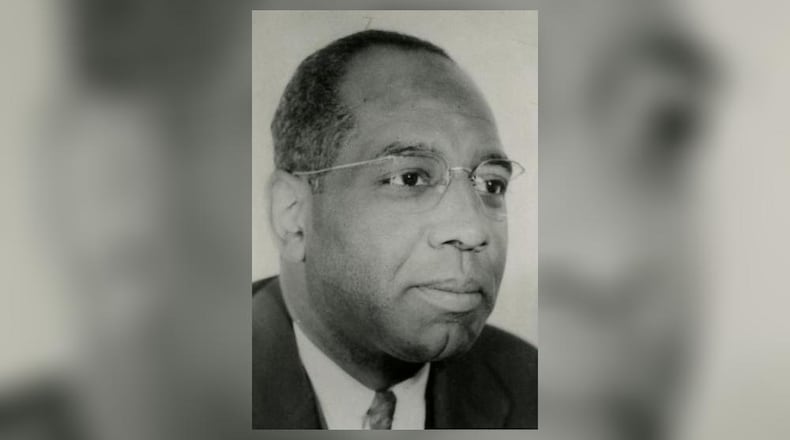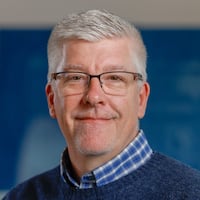Several members of the Hall of Fame have ties to our region. Most recently, Dayton metallurgist James A. Parsons Jr. was inducted.
Here are some other names with regional ties that we found on their list.
Roy J. Plunkett
Teflon
Roy J. Plunkett, born in New Carlisle, was a chemist for DuPont. While researching refrigerants, he discovered tetrafluoroethylene resin, now known as Teflon. Teflon, which is heat-tolerant and stick resistant, is best know as a widely-used coating for cookware.
Teflon was first used by scientists in the World War II Manhattan Project that produced the atomic bomb. It proved to be an ideal material for gaskets that would resist the corrosive effect of uranium hexafluoride, a gas created during the production of enriched uranium.
Plunket also worked to form new fluorochemical products and processes used in the refrigeration, aerosol, electronic, plastics, and aerospace industries, many of which are used in the area of national defense.
Charles Kettering
Electrical Ignition System
Charles Kettering, of Dayton, designed the first practical electric starter and battery-powered ignition systems for automobiles. Kettering’s idea saved motorists from the often back-breaking and sometimes dangerous job of crank-starting their engines.
The invention patented by Kettering sparked a boom in automobile sales and helped forge a new transportation culture.
Ernest H. Volwiler
Pentothal / Anesthesia
Ernest H. Volwiler, of Hamilton and a graduate of Miami University, discovered the general anesthetic Pentothal, which is still in use today.
Volwiler, working with Donalee Tabern at Abbott Laboratories, made the discovery while trying to create a substance which could be injected directly into a person’s blood stream to render them unconscious.
In Penthhal, they found an anesthetic that did not cause muscle twitching or psychic side effects. It could put a patient asleep within 20 minutes before a procedure and have them wake later without hangover.
The drug also caused people taking it to talk freely and became known as a “truth serum.”
James A. Parsons Jr.
Durimet 20 (Alloy 20) Stainless Steel Alloy
James A. Parsons Jr., born in Dayton in 1900, was a pioneer developer and patentee of stainless-steel metal alloys in the 1930s and 1940s. Durimet 20 is prized for a composition that resists corrosion.
His corrosion-resistant metal alloys enabled Dayton industrial component producer Durco to produce vessels, pumps, valves, and fittings capable of handling the isolation of uranium and plutonium corrosive solutions processed in the Manhattan Project to create the atomic bomb during World War II.
James and John Ritty
Mechanical Cash Register
James Ritty and his brother, John, developed a mechanical cash register for his saloon in Dayton. James wanted a machine to record sales and track transactions and John was a skilled mechanic.
James Ritty began manufacturing cash registers but then sold the business which became the National Cash Register Company, which later became known as NCR.
Orville and Wilbur Wright
Airplane
Aviation pioneers Orville and Wilbur Wright, of Dayton, invented, built and flew the first powered airplane. Built out of spruce and muslin, their first plane weighed 170 pounds and ran on a 12-horsepower motor.
Their first plane, the Wright Flyer, was developed with pilot controls, which they also invented, which were key to keeping the plane in flight.
Hans J.P. von Ohain
Turbojet Engine
Credit: HANDOUT
Credit: HANDOUT
Dr. Hans J. P. von Ohain was an engineer and physicist who invented the gas turbine (jet) engine in the 1930s while still in his native Germany. This invention opened a new era in transportation and warfare.
He came to the United States after the war and became a research scientist at Wright-Patterson Air Force Base, where he continued to work on issues surrounding jet propulsion.
Floyd Smith
Modern Parachute
Floyd Smith spent 40 years of his life inventing, testing, perfecting and producing parachutes.
An aviator and former circus aerialist, he became interested in parachutes after surviving a near-fatal accident while working as a test pilot. He believed a chute carried on a person’s back and released after clearing an airplane was a better option that the static-line chutes which were in common use.
Hired by U.S. Army Air Service to test and inspect planes at South Field in Dayton, Smith received a patent for his parachute, which solved the problem of entangled lines which could happen with the static-line type. His design was refined at McCook Field in Dayton and became standard use for the Army in WWI and for decades after.
George R. Stibitz
Digital Computer
George R. Stibitz is known as the father of the modern computer. He attended Moraine Park, a progressive school in Dayton, before graduating from Denison University.
Stibitz worked for Bell Telephone Laboratories where he developed a series of instruments that started with a two-digit binary adder, a calculator capable of complex arithmetic and then more complex machines considered the earliest “digital computers.”
Thomas Midgley Jr
Leaded gasoline and Freon
Credit: HANDOUT�
Credit: HANDOUT�
Thomas Midgley Jr. was a mechanical and chemical engineer who worked under the direction of Charles Kettering at Dayton Research Laboratories, a subsidiary of General Motors.
He discovered that adding lead (tetraethyllead) to gasoline prevented engine knocking.
While working in the Frigidaire division of General Motors, Midgley played a major role in synthesizing the first chlorofluorocarbon (CFC), which was named “Freon.”
Although revolutionary at the time, both leaded gasoline and Freon were later found to have major negative environmental impacts.
About the Author









